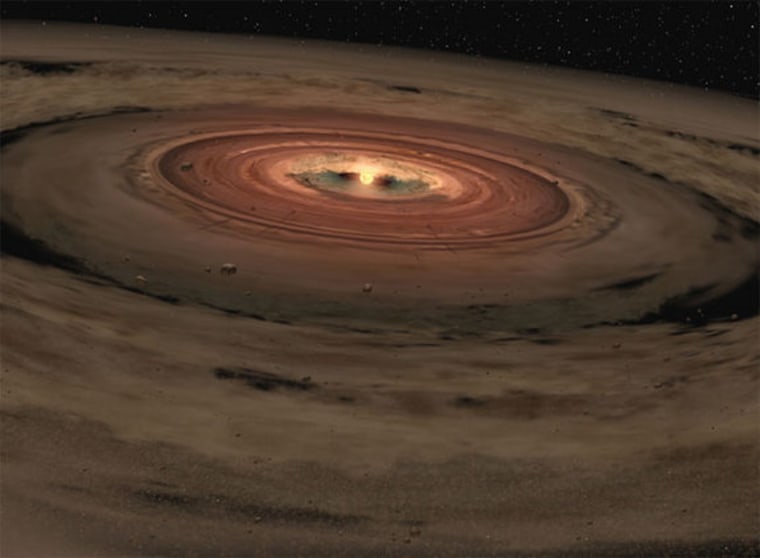Long-ago collisions between clouds of gas and dust could explain why many alien solar systems have planets with strange, highly tilted orbits — and why habitable worlds may be rare in the universe, a new study suggests.
Newly forming solar systems may be jostled by interactions with nearby clumps of matter, leading to systems in which alien planets have dramatically tilted orbits and the smaller (and potentially habitable) worlds are ejected, according to the study.
"We may be on the cusp of solving the mystery of why some planetary systems are tilted so much and lack places where life could thrive," said study lead author Pavel Kroupa of the University of Bonn in Germany, in a statement. "Our work should help other scientists refine their search for life elsewhere in the universe."
Tilting a planet nursery
Most of the planets in our own solar system, including Earth, have relatively circular orbits and are lined up along a plane that isn't tilted much from the sun's equator. They also orbit in the same direction around the sun as our star spins.
But many other solar systems are not so neatly ordered, harboring planets that move in the opposite direction of their stars' spin on highly tilted orbits. The new study offers a possible explanation for these seemingly irregular traits.
Planetary systems coalesce from clouds of dust and gas that collapse into a rotating disk under the influence of gravity. Planets grow from clumps of matter within these protoplanetary disks, which have young stars at their centers.
Using computer models, the researchers showed that protoplanetary disks can become considerably tilted if they encounter another nearby cloud of material and suck in some of its mass. These collisions can also reverse the disks' spin, leading to the odd orbits seen in many alien solar systems today.
Most planetary systems are thought to form in clusters of stars, where the member stars are fairly close together, so these encounters may be very common, researchers said.
The research will be detailed in an upcoming issue of the journal Monthly Notices of the Royal Astronomical Society.
Is our solar system unique?
The team's simulations suggest that these encounters can lead to highly unstable planetary systems, in which some planets' orbits are considerably tilted with respect to each other.
In such systems, the smaller planets — those most likely to be rocky and potentially habitable worlds — will be booted out into deep space, leaving behind a small number of so-called "hot Jupiters," gas giants that orbit extremely close to their parent stars.
Not all encounters have to be so dramatic. If a nascent solar system draws off a touch of material from a nearby cloud, the orbits of its planets might just be tilted slightly, with no planetary ejections or other dire consequences.
That may be what happened to our own solar system 4.6 billion years ago, researchers said. The weighted average tilt of planetary orbits relative to the sun's equator is just 7 degrees.
"Like most stars, the sun formed in a cluster, so probably did encounter another cloud of gas and dust soon after it formed. Fortunately for us, this was a gentle collision, so the effect on the disk that eventually became the planets was relatively benign," said Ingo Thies, also of the University of Bonn.
"If things had been different," Thies added, "an unstable planetary system may have formed around the sun, the Earth might have been ejected from the solar system and none of us would be here to talk about it."
Follow Space.com for the latest in space science and exploration news on Twitter and on .
